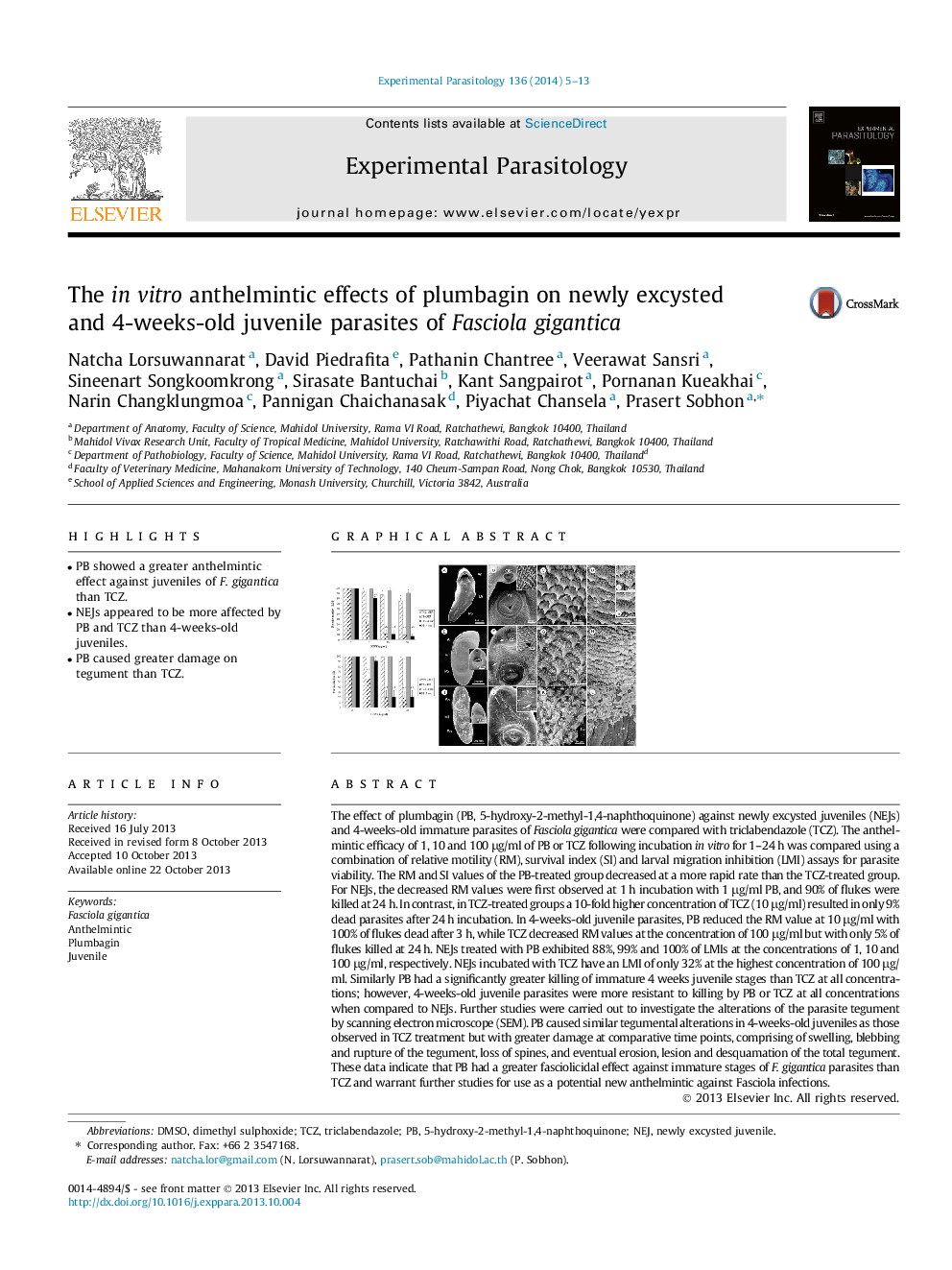| کد مقاله | کد نشریه | سال انتشار | مقاله انگلیسی | نسخه تمام متن |
|---|---|---|---|---|
| 4371141 | 1617028 | 2014 | 9 صفحه PDF | دانلود رایگان |

• PB showed a greater anthelmintic effect against juveniles of F. gigantica than TCZ.
• NEJs appeared to be more affected by PB and TCZ than 4-weeks-old juveniles.
• PB caused greater damage on tegument than TCZ.
The effect of plumbagin (PB, 5-hydroxy-2-methyl-1,4-naphthoquinone) against newly excysted juveniles (NEJs) and 4-weeks-old immature parasites of Fasciola gigantica were compared with triclabendazole (TCZ). The anthelmintic efficacy of 1, 10 and 100 μg/ml of PB or TCZ following incubation in vitro for 1–24 h was compared using a combination of relative motility (RM), survival index (SI) and larval migration inhibition (LMI) assays for parasite viability. The RM and SI values of the PB-treated group decreased at a more rapid rate than the TCZ-treated group. For NEJs, the decreased RM values were first observed at 1 h incubation with 1 μg/ml PB, and 90% of flukes were killed at 24 h. In contrast, in TCZ-treated groups a 10-fold higher concentration of TCZ (10 μg/ml) resulted in only 9% dead parasites after 24 h incubation. In 4-weeks-old juvenile parasites, PB reduced the RM value at 10 μg/ml with 100% of flukes dead after 3 h, while TCZ decreased RM values at the concentration of 100 μg/ml but with only 5% of flukes killed at 24 h. NEJs treated with PB exhibited 88%, 99% and 100% of LMIs at the concentrations of 1, 10 and 100 μg/ml, respectively. NEJs incubated with TCZ have an LMI of only 32% at the highest concentration of 100 μg/ml. Similarly PB had a significantly greater killing of immature 4 weeks juvenile stages than TCZ at all concentrations; however, 4-weeks-old juvenile parasites were more resistant to killing by PB or TCZ at all concentrations when compared to NEJs. Further studies were carried out to investigate the alterations of the parasite tegument by scanning electron microscope (SEM). PB caused similar tegumental alterations in 4-weeks-old juveniles as those observed in TCZ treatment but with greater damage at comparative time points, comprising of swelling, blebbing and rupture of the tegument, loss of spines, and eventual erosion, lesion and desquamation of the total tegument. These data indicate that PB had a greater fasciolicidal effect against immature stages of F. gigantica parasites than TCZ and warrant further studies for use as a potential new anthelmintic against Fasciola infections.
Figure optionsDownload as PowerPoint slide
Journal: Experimental Parasitology - Volume 136, January 2014, Pages 5–13